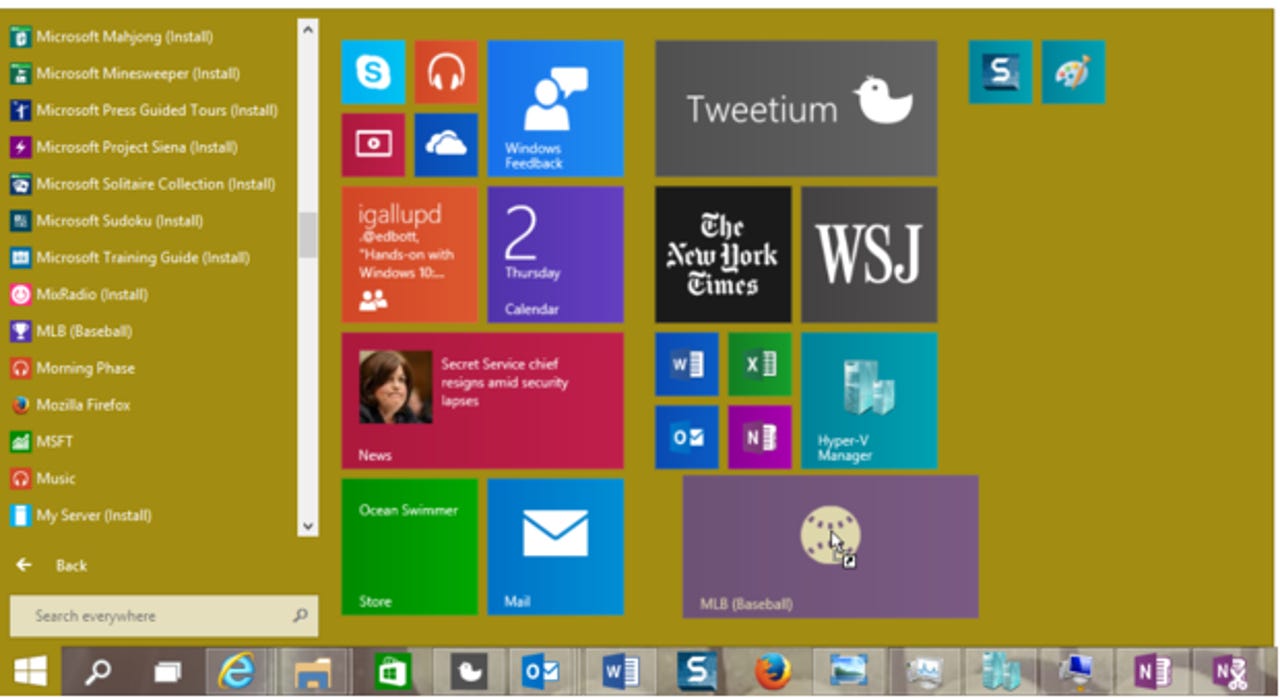Windows 10 may be the last piece of Microsoft's cloud puzzle


Microsoft's Windows 10 has been portrayed as way to placate the enterprise, create one platform for multiple screens and meld the interfaces of Windows 8, which had a rocky launch, and Windows 7, a hit.
A closer look at the Windows 10 Technical Preview
Windows 10 Technical Preview for Enterprise: Screenshots
Windows 10 Technical Preview for Enterprise: Key features yet to appear
Microsoft's Windows 10: More on the 'under the covers' security, Store features
Microsoft to detail more of its next-generation developer story in November
Microsoft's Windows 10: What's new and how to get the preview bits
Microsoft christens the next version of Windows as Windows 10
The reality is that Windows 10, which is expected to be the last of the traditional big bang launches, is likely to complete Microsoft's transition from a software licensing model to a cloud computing one.
Windows 10 will be built around continual upgrades and stable releases on a schedule. There won't be a Windows 11, 12 and 13, but the platform will evolve over time. In theory, enterprises will be able to consume innovation easier. For Microsoft, enterprise customers will become subscribers.
It's hard to argue that Microsoft isn't a cloud company now. Azure, Office 365 and key enterprise apps are delivered as a service. Windows is the last big chunk left under an enterprise licensing model.
Microsoft didn't outline pricing for Windows 10, but rest assured that there will be a software-as-a-service cadence to it. Consider the following:
- For consumers, Windows 10 will have monthly updates with subscriptions similar to Office 365. Businesses will have an option to skip monthly updates.
- Enterprise users will likely get Windows 10 updates quarterly or every six months. The standard for SaaS vendors is twice a year updates with releases coming with features that aren't activated. This schedule would enable enterprises to validate the updates.
- Some enterprises may choose to roll out updates every two years, but still pay subscriptions over a term.
In either case, enterprises will ultimately start paying for Windows by the user on a subscription model even as Microsoft gives away the platform on smaller screens.
The time frame for this cloud/subscription transition will depend on how fast enterprises move from Windows 7. Windows 10 wouldn't arrive until 2015 and enterprises on the bleeding edge would start deployments in 2016. Most companies are going to go with a Windows XP scenario. Windows 7 can last for years and end of life will occur in 2020.
In other words, the rush off of Windows XP will be emulated in 2020 with Windows 7. This scenario assumes few enterprises will bother with Windows 8.
No matter how enterprises move to Windows 10 — at a consumer pace, staying current with a lag or sticking with Windows 7 as long as possible — in five to six years Microsoft's flagship software will be under a cloud model. An added bonus for Microsoft is that the Windows 10 launch and time frame for enterprises provides a smooth transition from licensing to subscriptions and recurring revenue.
More Windows 10
- What's new and how to get the preview bits
- Microsoft to detail more of its next-generation developer story in November
- What Windows 10 has to strategically accomplish
- Ed Bott: Hands-on advice for installing Windows 10
- Installing Technical Preview into a VM on OS X or Windows
- What the enterprise needs to hear from Microsoft